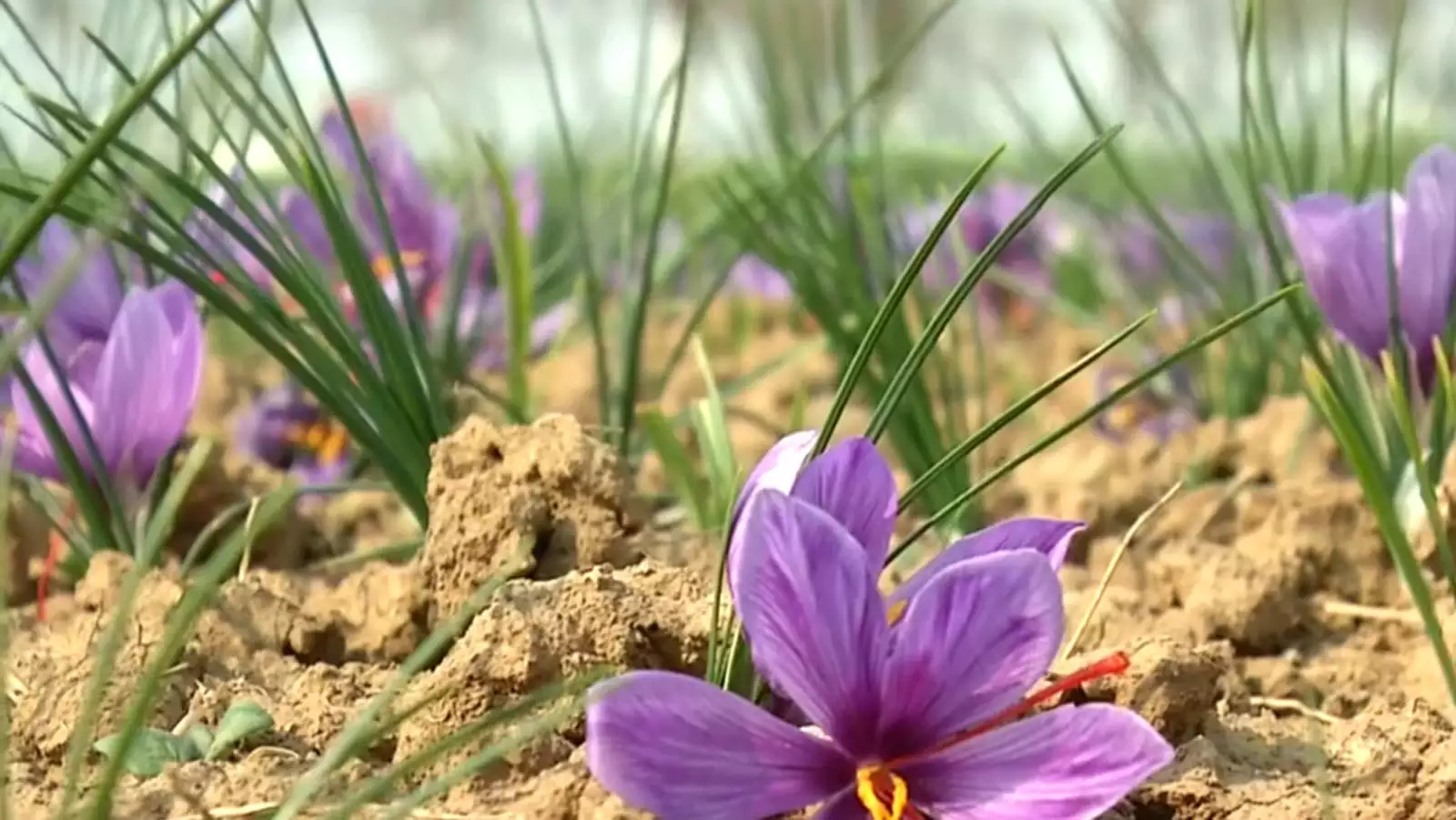Scientists of Sher-e-Kashmir University of Agriculture Science and Technology (SKUAST), after successfully producing saffron indoor, had three years ago handed over its buds to Abdul Majid Wani and a few other farmers to experiment, which proved to be a successful endeavour
A veteran farmer from Pampore in south Kashmir’s Pulwama, who had been cultivating saffron for decades, has this time successfully grown high-quality spice in one of the rooms of his single-storey house, a phenomenon which he said could bring a revolution in years to come.
Scientists of Sher-e-Kashmir University of Agriculture Science and Technology (SKUAST), after successfully producing saffron indoor, had three years ago handed over its buds to Abdul Majid Wani and a few other farmers to experiment, which proved to be a successful endeavour.
“I have been cultivating saffron inside my house and have a few hundred trays placed in a room which yielded around one kilogram of saffron this year,” Wani said, claiming that quality wise, the spice grown indoors is better than what’s cultivated outside.
“The first year, the yield was low, but with every passing year, the quantity is going up with addition of more and more trays,” he added.
Wani said he was the first to grow saffron indoors, but 10 more farmers became part of the experiment this year. “We are hopeful that more and more people would start growing saffron indoor. This can increase our production by seven to nine times,” he said. “Growing saffron inside a room is very easy and less cumbersome. We are also roping in growers from outside south Kashmir. I have provided hundreds of trays to growers in Kupwara district,” he added.
Scientists also claimed that the practice has shown good success rate in Pampore and its neighbouring villages. There has been a bumper saffron crop this year with the growers fetching handsome price for their produce. At a time when agricultural land is shrinking, this indoor saffron, officials say, could offer a great opportunity to those with limited space.
“The experiment was carried out at the saffron research centre at Pampore and then buds were provided to growers, many of whom have cultivated it successfully at their homes,” said Dr Mudasir, assistant professor at the research centre in Dusoo.
For cultivating saffron indoors, growers are using plastic trays and special seeds which multiply by every passing year. They then use racks to keep the materials inside the dark room and maintain the temperature for better results. It takes three months from cultivation to flower yield. Later, the buds are preserved in open fields or kitchen gardens for next season.
“It’s just a beginning. In coming years, hundreds of growers will start cultivating saffron indoors,” said a farmer, Abid Ahmad, who is also planning to dedicate one room of his house to indoor cultivation.
The government had last year said that the annual yield of saffron in Kashmir crossed 13 metric tonnes in 2020 for the first time in 10 years. The production is quite encouraging this year too with growers and officials claiming that they yielded 30% more saffron due to favourable temperature this time.
The bumper output of saffron, which mostly is cultivated in Pampore, in 2020 was to a large extent attributed to the introduction of National Saffron Mission in 2010 to rejuvenate the cultivation of the spice, officials said.
The scheme brought scientific know-how, underground irrigation and a spice park to enhance the production and post-production processes.
Saffron production had peaked in Kashmir in the 1990s with an annual average output of around 15.5 metric tonnes. However, it declined owing to untimely rains, drought, wanton constructions and conversion of saffron fields into commercial enterprises. The production was 11.72 tonnes in 2015 as compared to 1.4 tonnes four years ago.
Officials say that GI tagging of Kashmir saffron and online marketing facilities at the spice park have made it easy for buyers and sellers to trade.
Prior to the National Saffron Mission, Pampore’s signature crop was in the red. The rain-fed saffron belt had seen a steady decline from 5,000 hectares to 3,000 hectares in the last two decades.
Over the past decade, the project has focused on standardisation of seed (bulbs), scientific packaging and subsidised drip irrigation.
This has helped in rejuvenating the saffron crop and increasing the area under cultivation to 3,700 hectares. Pulwama alone accounts for 3,200 hectares.
“We are trying various options to increase the production of saffron, which is also known as golden crop. Hopefully, these experiments will turn successful,” said a senior agricultural officer associated with saffron.

